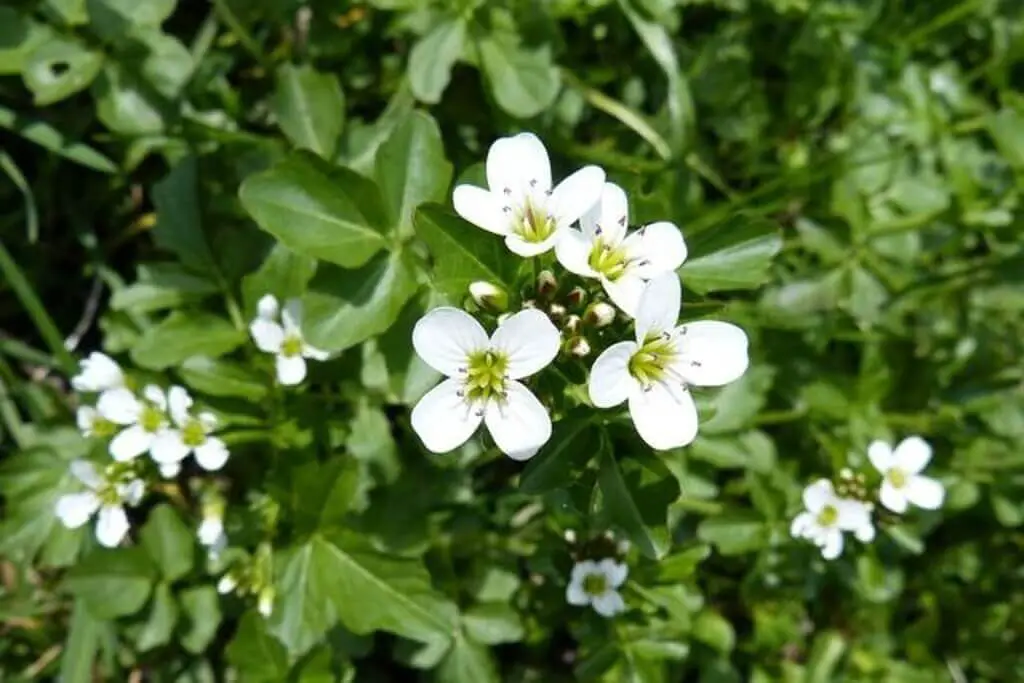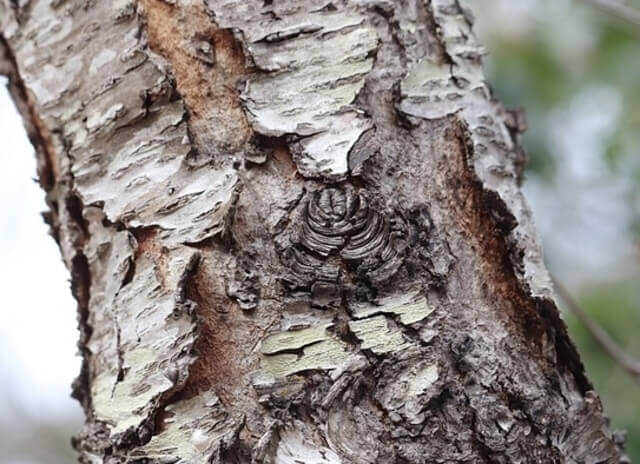26 Herbs And Spices That Start With W (A Simple Guide!)
When we think of herbs and spices, it is often a daunting task to figure out which ones to use. This article will help you navigate the process by giving an overview of some common herbs and spices that start with W.
If you’re taking medication or have an allergy, it’s important to consult your doctor before adding any new herbs or spices to your diet.
Table of Contents
- 1 Herbs And Spices That Start With W
- 1.1 Walnut, Black (Juglans nigra)
- 1.2 Watercress (Nasturtium officinale)
- 1.3 White Peony Root (Paeonia albiflora)
- 1.4 White Willow Bark (Salix Alba)
- 1.5 Wild Cherry Bark (Prunus serotina)
- 1.6 Wild Ginger (Asarum canadense)
- 1.7 Wild Hyacinth (Hyacinthus nonscriptus)
- 1.8 Wild lettuce (Lactuca virosa)
- 1.9 Wild Yam Root (Dioscorea villosa)
- 1.10 Wintergreen Oil (Gaultheria procumbens)
- 1.11 Witch Hazel (Hamamelis virginiana)
- 1.12 Wolf’s Claw (Lycopodium clavatum)
- 1.13 Wood Betony (Stachys officinalis)
- 1.14 Woodruff, Sweet (Galium odoratum)
- 1.15 Wormwood (Artemisia absinthium L.)
- 1.16 Wu Long Tea (Camellia sinensis)
- 2 Spices That Start With W
- 2.1 Wild cinnamon (Cinnamomum iners)
- 2.2 Wild yellow kandis (Garcinia parvifolia)
- 2.3 Wild pepper (Piper sarmentosum)
- 2.4 Wild garlic (Tulbaghia violacea)
- 2.5 Water Hyssop (aka Bacopa caroliniana)
- 2.6 West Indian Lemon Grass (Cymbopogon citratus)
- 2.7 Woolly Mint (Mentha suaveolens)
- 2.8 White Pepper (Piper nigrum)
- 2.9 White-man’s Foot (Plantago major)
- 2.10 Winter Tarragon (Tagetes lucida)
- 3 Author
Herbs And Spices That Start With W
Walnut, Black (Juglans nigra)
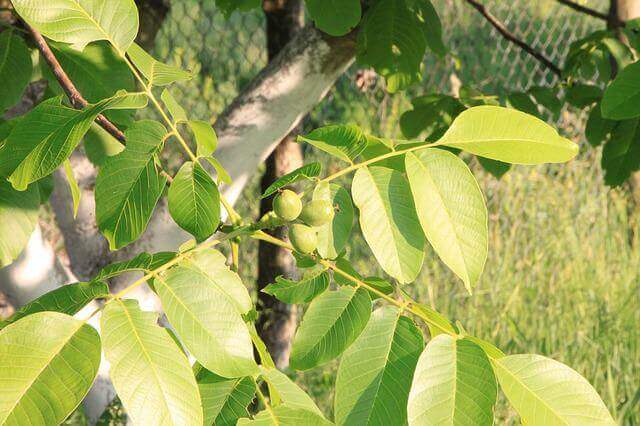
The black walnut tree is a large deciduous hardwood tree that can reach up to 100 feet tall.It has dark green, compound leaves that are made up of 11-23 leaflets. It has a broad, round crown and typically grows in rich, moist soils of the eastern and central United States. The black walnut is the most common species of walnut tree in the United States.
It is a slow growing tree that lives for 150 to 200 years. Walnuts are an excellent source of omega-3 fatty acids, protein, fiber, magnesium, potassium, vitamin E, and antioxidants. They have been shown to improve heart health, reduce inflammation, and help with weight loss.
The hulls of black walnuts contain juglone, a toxin that can cause skin irritation and other adverse effects. The tree produces edible nuts in the fall that are enjoyed by people and wildlife. The nuts are also used in baking and cooking. The tree’s wood is strong and durable and is used for furniture, flooring, and other construction projects.
Watercress (Nasturtium officinale)
Watercress, is a leafy green vegetable that has been used for centuries as a natural remedy. It is high in vitamins A and C, as well as minerals such as zinc and iron. Watercress can be eaten fresh in salads, or added to soups or sandwiches. It has a peppery flavor that can add zing to any dish.
Watercress is also known for its medicinal properties. It has been used to treat everything from respiratory infections to urinary tract infections. Watercress is also high in antioxidants, which can help protect the body from harmful toxins.
Although watercress is generally safe to eat, there are some dangers associated with it. It can contain small amounts of arsenic, which can be harmful if eaten in large quantities.
White Peony Root (Paeonia albiflora)
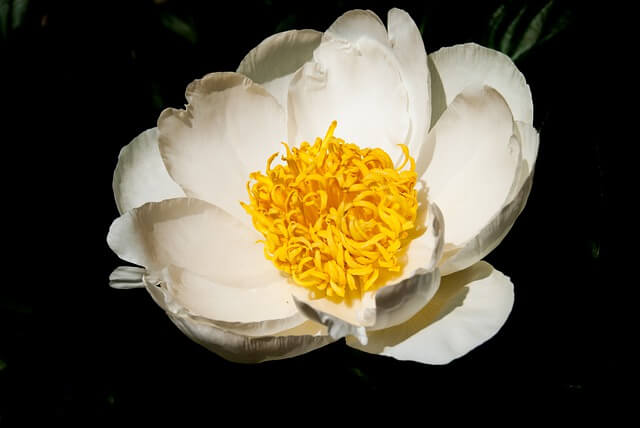
White Peony root, Paeonia albiflora, has been used medicinally in Asia for centuries. The dried root is most often used and can be found in many forms including pills, powders, and teas. It is most commonly used for its anti-inflammatory and analgesic properties. White Peony root is also a detoxifier and can help the body get rid of toxins.
It is a natural relaxant and is often prescribed for anxiety and insomnia. Additionally, White Peony root has been shown to be helpful in treating menstrual irregularities and other women’s health issues.
Although rare, there are some dangers associated with White Peony root including stomach upset and liver damage. When taken in appropriate doses, however, the benefits of White Peony root far outweigh any risks.
White Willow Bark (Salix Alba)
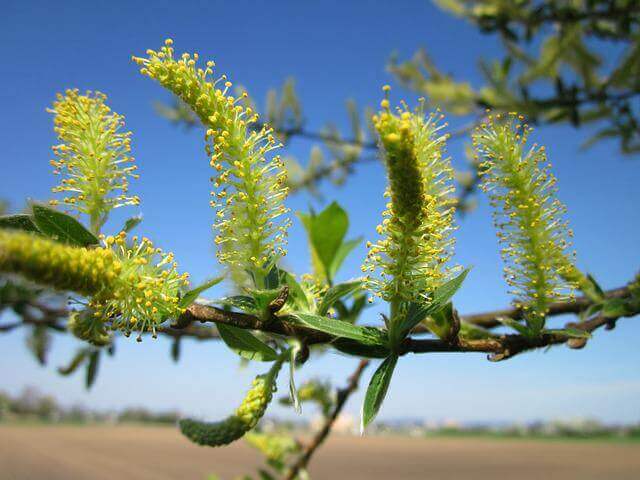
White willow, Salix alba, is a tree that grows up to 25 meters tall. It has a characteristic weeping shape and white bark. The leaves are alternate, simple, and lanceolate with a serrated margin. The flowers are catkin-like and occur in early spring. The fruit is a small capsule.
White willow is native to Europe and Western Asia but is now also found in North America. The bark of white willow contains salicin which is converted into salicylic acid in the body.
This makes white willow a natural source of aspirin. Aspirin is used to relieve pain, fever, and inflammation. It is also used to reduce the risk of heart attack and stroke. White willow can be taken as a tea, tincture, or capsules.
Wild Cherry Bark (Prunus serotina)
The wild cherry, or black cherry, is a large deciduous tree that is found in the eastern and central United States. The tree grows to a height of 50-70 feet and has a trunk diameter of 12-18 inches. The bark is smooth and dark gray, while the leaves are 2-5 inches long, lance-shaped, and dark green.
The flowers are small and pink, while the fruit is a black cherry that is 1-1.5 inches in diameter. The wild cherry tree has many uses. The wood is used for lumber, furniture, and other items.
The bark can be made into a tea that is used to treat respiratory problems and other health issues. The fruit can be eaten fresh or made into jams, jellies, pies, etc.
Wild Ginger (Asarum canadense)
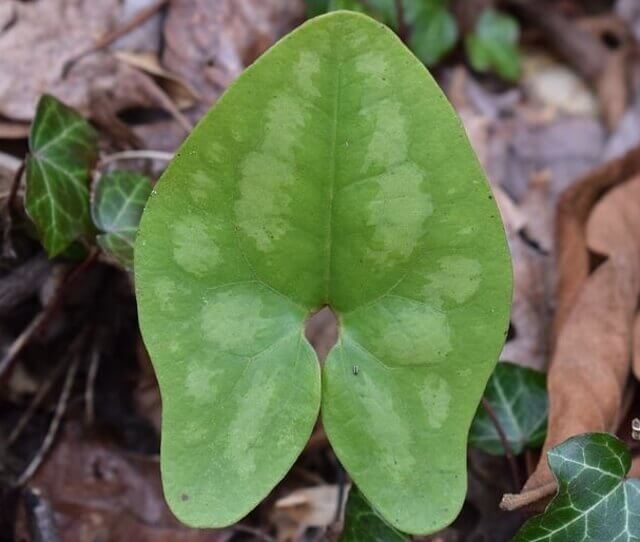
Wild ginger, Asarum canadense, is a member of the Aristolochiaceae family. It is a rhizomatous perennial that is indigenous to eastern North America. The plant has kidney-shaped leaves and produces small, brownish-purple flowers in early spring. The root system of wild ginger is extensive and sends up new shoots each year.
Wild ginger has been used medicinally by various Native American tribes for centuries. The plant is thought to be a general tonic and to have anti-inflammatory properties.
It has been used to treat respiratory problems, gastrointestinal issues, and various skin conditions. Wild ginger can also be used as a seasoning herb. The roots are dried and ground into a powder that can be added to foodstuffs or brewed into a tea.
Wild Hyacinth (Hyacinthus nonscriptus)
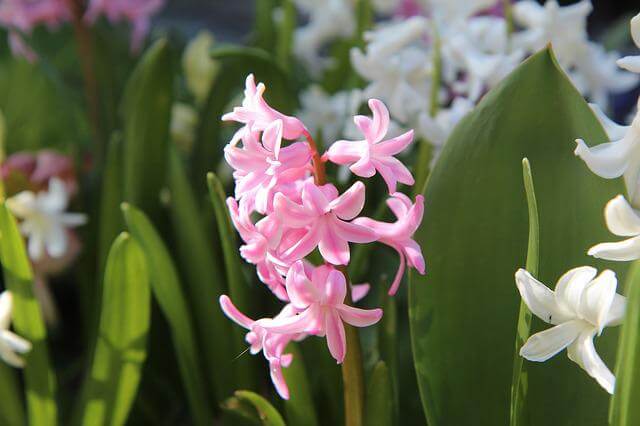
Wild hyacinth, Hyacinthus nonscriptus, is an attractive perennial wildflower that can be found throughout much of the Canada and the United States. The plant has narrow, lance-shaped leaves and produces spikes of fragrant, sky-blue, lilac or white flowers in the spring, and is often used as an ornamental plant. Wild hyacinth is a valuable source of nectar for bees and other pollinators.
The flowers are also enjoyed by butterflies and other insects. The plants can be found in fields, meadows, and along roadsides. Wild hyacinth is a hardy perennial that can survive cold winters and drought conditions. The plant is also deer resistant. Wild hyacinth has many uses and benefits.
The flowers can be used to make tea, which has medicinal properties. The leaves can be used to make a poultice to treat cuts and wounds. However, the Wild Hyacinth can also be dangerous. It can cause skin irritation and respiratory problems.
Wild lettuce (Lactuca virosa)
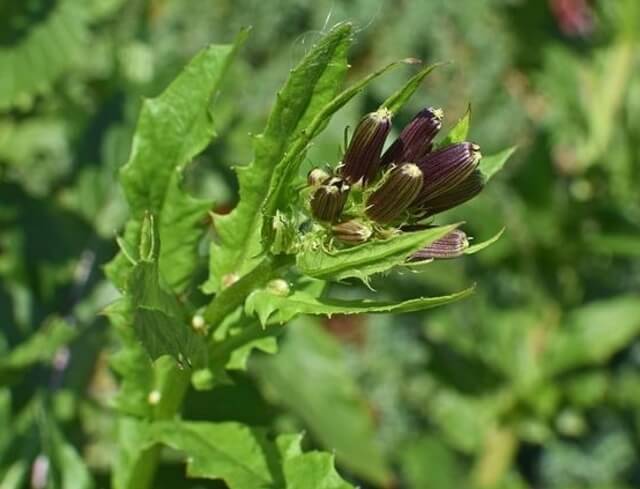
Wild lettuce, Lactuca virosa, is a weed that can be found throughout the United States. The plant has a rosette of leaves and a thick stalk. The leaves are green, and the flowers are yellow. Wild lettuce is in the same family as lettuce, but it is not edible. The plant has several uses and benefits, but it also has dangers.
Wild lettuce can be used to make tea, which is said to have medicinal properties. The tea can be used to treat anxiety, insomnia, and pain. It can also be used as a relaxant.
The plant can also be used as a sedative. It was once used to treat addiction to opium and other drugs. Wild lettuce is now being studied for its potential use in treating cancer and other diseases. There are some dangers associated with wild lettuce.
Wild Yam Root (Dioscorea villosa)
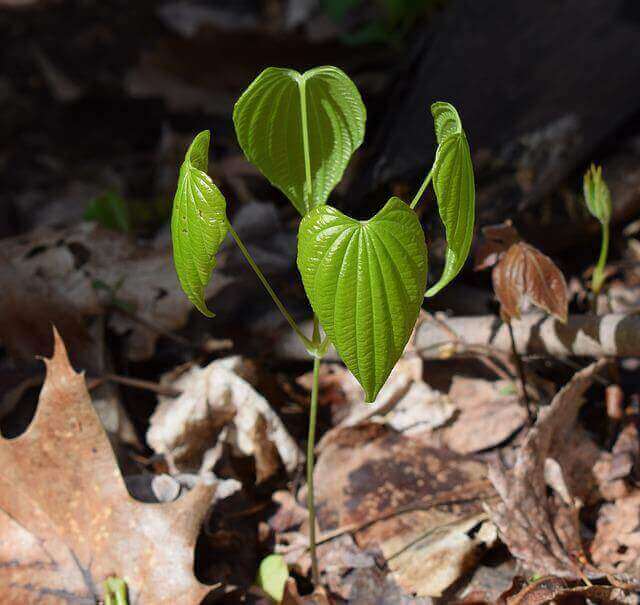
The wild yam root, Dioscorea villosa, is a perennial plant that is found in eastern and central North America. The root of the plant has been used for centuries by Native Americans for its medicinal properties. The root is most often dried and ground into a powder form, which can be taken internally or applied topically.
Some of the key uses and benefits of the wild yam root include: reducing inflammation, treating menstrual cramps and other menstrual issues, soothing digestive upset, and balancing hormones.
However, there are also some dangers associated with consuming wild yam root, so it is important to consult with a healthcare professional before starting any new supplement regimen.
Wintergreen Oil (Gaultheria procumbens)

Wintergreen oil is a natural extract from the leaves of the wintergreen plant, Gaultheria procumbens. The essential oil has a sweet, minty taste and is used as a flavoring in food and beverages, as well as in toothpaste, mouthwash, and other personal care products.
It is also used in aromatherapy to promote relaxation. Wintergreen oil is available commercially in both liquid and solid forms.The primary chemical constituent of wintergreen oil is methyl salicylate (MS), which is also found in aspirin.
MS has analgesic (pain-relieving) and anti-inflammatory properties. It is used to treat muscle pain, arthritis, and other types of pain. MS can also be toxic if taken in large doses.
Witch Hazel (Hamamelis virginiana)
Witch Hazel, Hamamelis virginiana is a shrub with yellow flowers that grows in the eastern and central United States that has been used for centuries by Native Americans and early settlers. The bark, leaves, and twigs are all used to make medicine. Witch hazel is used for diarrhea, hemorrhoids, constipation, and other problems of the digestive system.
It is also used as a skin wash or ointment for skin conditions such as psoriasis, eczema, diaper rash, burns, and bruises. Some people use witch hazel to reduce swelling after childbirth or surgery.
It can also be inhaled (breathed in) to help relieve nasal congestion.Witch Hazel can be dangerous if taken internally in large doses.
Wolf’s Claw (Lycopodium clavatum)
Wolf’s Claw, also known as Club Moss, is a terrestrial fern that is found in Europe and North America. The plant gets its name from the small, claw-like leaves that grow on the stems. Wolf’s Claw has been used for centuries in traditional medicine to treat a variety of ailments.
The plant contains a number of beneficial compounds, including saponins, sterols, and alkaloids. It is also high in minerals such as calcium and magnesium. Wolf’s Claw has been shown to be effective in treating respiratory problems, joint pain, and anxiety.
Additionally, it is thought to be helpful in detoxifying the body and boosting the immune system. However, there are some dangers associated with Wolf’s Claw. The plant can be toxic if taken in large doses and may interact with other medications.
Wood Betony (Stachys officinalis)
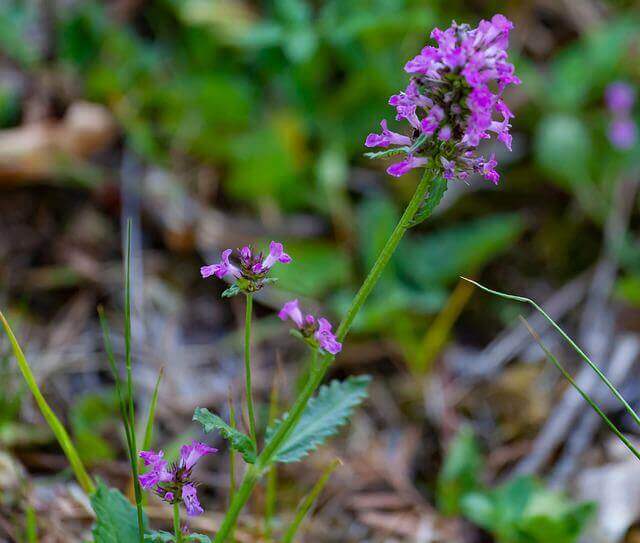
Wood Betony (Stachys officinalis), also known as Bishop’s Wort, is a perennial herb plant that is often found in the wild. The plant has a long history of use in traditional medicine and is still used today for a variety of purposes.
Wood Betony has many beneficial properties, including analgesic, antispasmodic, astringent, carminative, diaphoretic, and nervine effects. It can be used to treat a wide range of conditions, such as headaches, anxiety, tension headaches, menstrual cramps, and indigestion.
Wood Betony is also high in tannins which makes it useful for treating skin conditions such as eczema and psoriasis. However, there are also some dangers associated with using Wood Betony.
Woodruff, Sweet (Galium odoratum)

Woodruff, Sweet (Galium odoratum) is a sweet-smelling, low-growing perennial flowering herb plant found in shady woods and along streams, woodruff has finely divided leaves and small clusters of white flowers. It has a long history of use as a medicine, flavoring agent, and perfume.
The dried leaves are the most commonly used part of the plant. They are made into a tea or added to other teas to improve the flavor. Woodruff tea is a mild diuretic and is often prescribed for bladder problems. It can also be helpful in reducing inflammation and speeding healing processes.
Woodruff is also used as a flavoring agent in food and beverages. The delicate flavor it imparts has been described as being similar to that of strawberries or green apples. In addition, woodruff essential oil is used in cosmetics and perfumes.
Wormwood (Artemisia absinthium L.)
Wormwood (Artemisia absinthium L.) is an annual, herbaceous plant that is a member of the Asteraceae family. The plant can reach heights of up to 1.5 meters and has a woody stem. Wormwood has small, green leaves that are covered in fine hairs. The flowers are yellow and are produced in late summer and early fall.
Wormwood has a long history of use, both medicinally and culinarily.The most well-known use of wormwood is to make absinthe. Absinthe is a liquor that is made from wormwood extract, anise, and fennel.
Wormwood is also used in herbal medicine. It has been used to treat digestive issues, fever, pain relief, and as a stimulant. Wormwood oil is also used as an insecticide and a repellent for pets.
Wu Long Tea (Camellia sinensis)
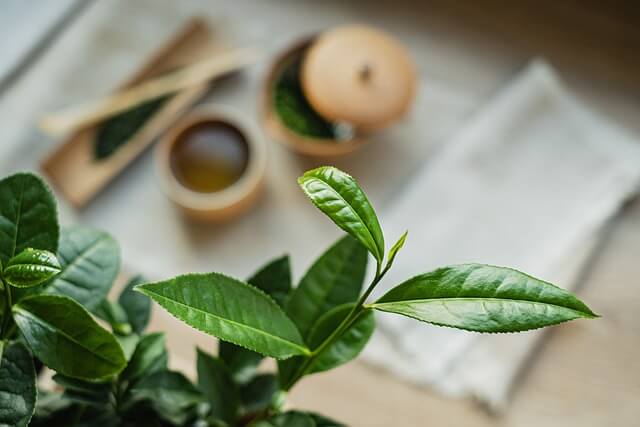
Wu Long tea is made from the Camellia sinensis plant. The leaves are dried and then rolled into small balls. Wu Long tea is a black tea and has a strong flavor. It is high in caffeine and can be brewed like other black teas.
Wu Long tea has many health benefits. It provides the body with strong antioxidants that can help fight off disease. Wu long tea can also help boost cardiovascular health and lower cholesterol levels. It is also a good resource of vital minerals and vitamins.
There are some dangers associated with drinking Wu Long tea. It is high in caffeine and can cause problems for people with heart conditions or anxiety disorders. Wu Long tea should not be drunk by pregnant women or people who are sensitive to caffeine.
Spices That Start With W
Wild cinnamon (Cinnamomum iners)
Wild cinnamon, also known as Cinnamomum iners, is a small tree or large shrub that can be found in many parts of the world. The bark and leaves of the wild cinnamon plant are used to make medicine. Wild cinnamon is used for upset stomach, diarrhea, and other intestinal problems. It is also used for infections of the respiratory tract, urinary tract, and skin.
Other uses include treating malaria, sore throat, fever, and headaches. People have been using wild cinnamon for centuries to treat a variety of illnesses. The plant has many beneficial compounds that help to improve health.
Some of these compounds include cinnamaldehyde, eugenol, terpenes, and flavonoids. However, there are also some dangers associated with using wild cinnamon. The plant can be toxic if taken in high doses.
Wild yellow kandis (Garcinia parvifolia)
Wild yellow kandis (Garcinia parvifolia) is a fruit-bearing tree found in Southeast Asia. The fruit is used to make a sour condiment, and the leaves are used as a medicine. The fruit is green when unripe and turns yellowish as it ripens. It has small, black seeds and a sour taste. The leaves look dark green and have a glossy finish.
The sour condiment made from the fruit is used to add flavour to food, especially rice dishes. It is also used as a preservative. The leaves are boiled and taken as a medicine to treat diarrhoea, indigestion, and fever.
There is no scientific evidence that the leaves or fruit of wild yellow kandis have any medicinal benefits. There have been cases of poisoning from eating the unripe fruit.
Wild pepper (Piper sarmentosum)
Wild pepper, also known as Piper sarmentosum, is a climbing vine that is native to Southeast Asia. It has green leaves and small white flowers. The fruit of the plant is a small, red pepper that is used in cooking.
Wild pepper has a spicy flavor and is used in Thai cuisine. It is also used as a medicine in traditional Chinese medicine. Wild pepper has been shown to have anti-inflammatory and antioxidant properties.
It may also help improve blood circulation and digestion. However, there are some dangers associated with wild pepper. Pregnant women should avoid it due to its potential abortifacient effects.
Wild garlic (Tulbaghia violacea)
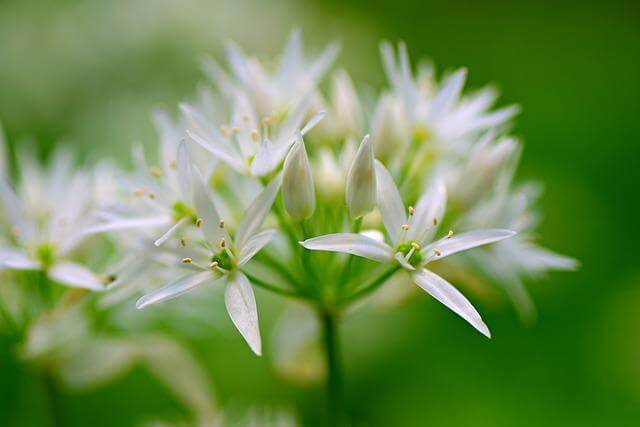
Wild garlic, also known as Tulbaghia violacea, is a perennial bulbous plant that can be found throughout South Africa. It has narrow, lance-shaped leaves and produces an abundance of small, star-shaped flowers in spring. The flowers are purple or white and have a delicate fragrance.
Wild garlic is a versatile plant with many uses. The leaves can be eaten raw or cooked, and are often added to salads or stir fries. They are high in vitamin C and have a slightly peppery flavor. The bulbs can also be eaten raw or cooked, and are a good source of protein and fiber.
Wild garlic is also prized for its medicinal properties. It is thought to be helpful in treating colds, flu, sinus infections and other respiratory problems. However, there are some dangers associated with wild garlic.
Water Hyssop (aka Bacopa caroliniana)
Water Hyssop (Bacopa caroliniana) is a water herb that can be found in North America and parts of Europe. It has been used for centuries in traditional medicine to treat a variety of issues. The plant is now being studied for its potential use in treating Alzheimer’s disease, anxiety, and depression. Some preliminary studies suggest that it may be helpful in these areas.
The plant is also being studied for its ability to improve cognitive function and memory. It appears to work by increasing the growth of new brain cells and connections between them. This may help protect the brain from damage caused by aging or injury.
Water Hyssop is generally safe when used appropriately. However, there are some dangers associated with it. It can cause vomiting and diarrhea if taken in high doses.
West Indian Lemon Grass (Cymbopogon citratus)
West Indian Lemon Grass, also known as Cymbopogon citratus, is a perennial grass that is native to tropical America. The plant has long been used in traditional medicine for a variety of purposes, including as a treatment for respiratory problems and headaches. West Indian Lemon Grass is also said to have antioxidant and anti-inflammatory properties.
West Indian Lemon Grass can be found in many forms, including essential oil, dried herb, and liquid extract. The essential oil is most commonly used in aromatherapy, while the dried herb can be brewed into a tea or added to food. Some people also use the liquid extract topically to treat skin conditions such as psoriasis.
West Indian Lemon Grass is generally considered safe when used in moderation. However, there are some potential dangers associated with its use.
Woolly Mint (Mentha suaveolens)
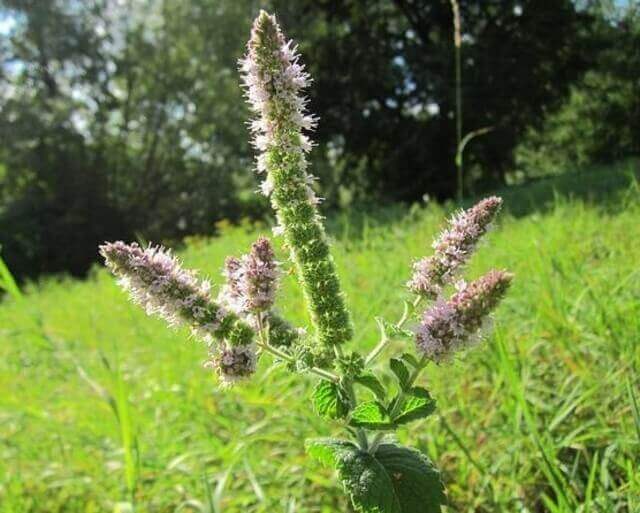
Woolly Mint, which is also known as Mentha suaveolens, is a type of mint that has hairy leaves and a sweet scent. This mint is a perennial, meaning it grows back each year, and can reach heights of up to 2 feet.
Woolly Mint can be used in a variety of ways, including in teas, as a flavoring agent, and in topical applications. Some believe that Woolly Mint can help improve concentration and cognitive function, while others claim that it has analgesic properties.
Despite these purported benefits, there is little scientific evidence to support them. Additionally, Woolly Mint should not be consumed in high doses as it can have adverse effects.
White Pepper (Piper nigrum)

White pepper is the less well-known, but equally delicious, sister of black pepper. It is made from the dried fruit of the Piper nigrum plant, which is a flowering vine that grows in tropical climates. The berries are picked when they are ripe and then dried. The outer hull is removed and what remains is the white pepper kernel.
White pepper has a slightly different flavor than black pepper, with a slightly sweet note. It is often used in dishes where you want black pepper to be visible, such as in white sauces or mashed potatoes. White pepper can also be used in pickling and fermentation recipes.
Like black pepper, white pepper has many health benefits. It is a good source of antioxidants, which help protect the body from damage caused by free radicals. White pepper also contains capsaicin, a compound that has anti-inflammatory properties. However, white pepper also has some dangers associated with it.
White-man’s Foot (Plantago major)
White-man s Foot (Plantago major) is a weed that can be found nearly everywhere. It has small, greenish-brown flowers and grows in a rosette pattern. The leaves of this plant are edible and have many uses. They can be eaten raw or cooked, and are high in fiber, vitamin C, and other nutrients.
White-man s Foot can also be brewed into a tea that is high in antioxidants and has many health benefits. This plant is also a natural remedy for many ailments. It is anti-inflammatory, analgesic, and soothing. White-man s Foot can be used to treat headaches, muscle pain, toothache, constipation, and other problems.
However, it is important to note that there are some dangers associated with this plant. It can cause diarrhea if eaten in large quantities and can also be toxic if ingested in large doses.
Winter Tarragon (Tagetes lucida)

Winter Tarragon, also known as Tagetes lucida, is a small annual herb that is native to Mexico and Central America. The plant grows to a height of only 12-18 inches and has bright green leaves that are 2-4 inches long. The flowers are small and yellow, and the plant blooms from winter to early summer.
Winter Tarragon is a popular herb in Mexico, where it is used to flavor food. The plant has a sweet licorice-like flavor and is used to flavor teas, soups, stews, and salads.
Winter Tarragon is also used as a medicinal herb. The plant contains compounds that are believed to be beneficial for the liver and the cardiovascular system.
Related Post:

